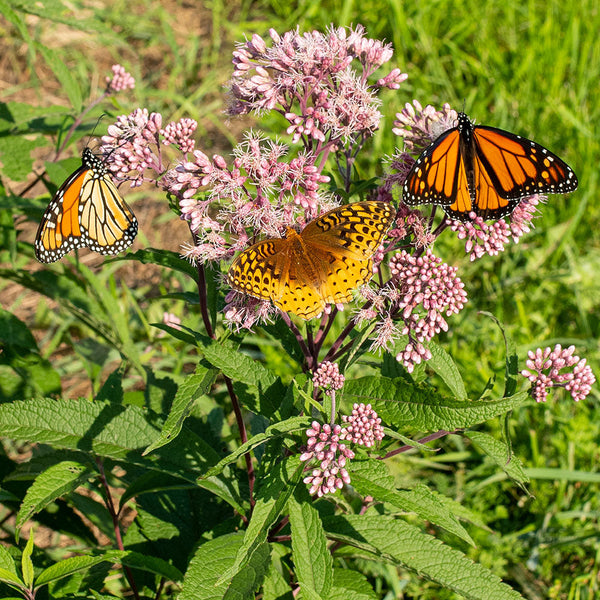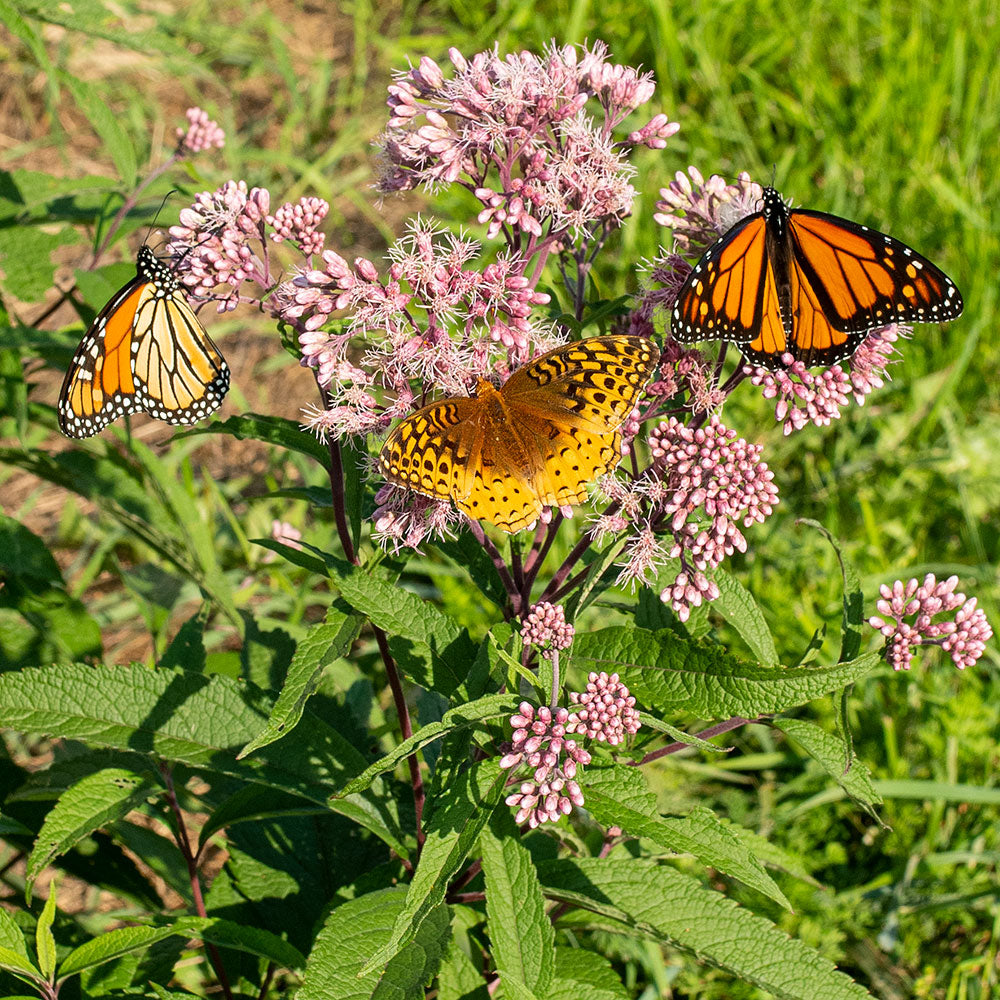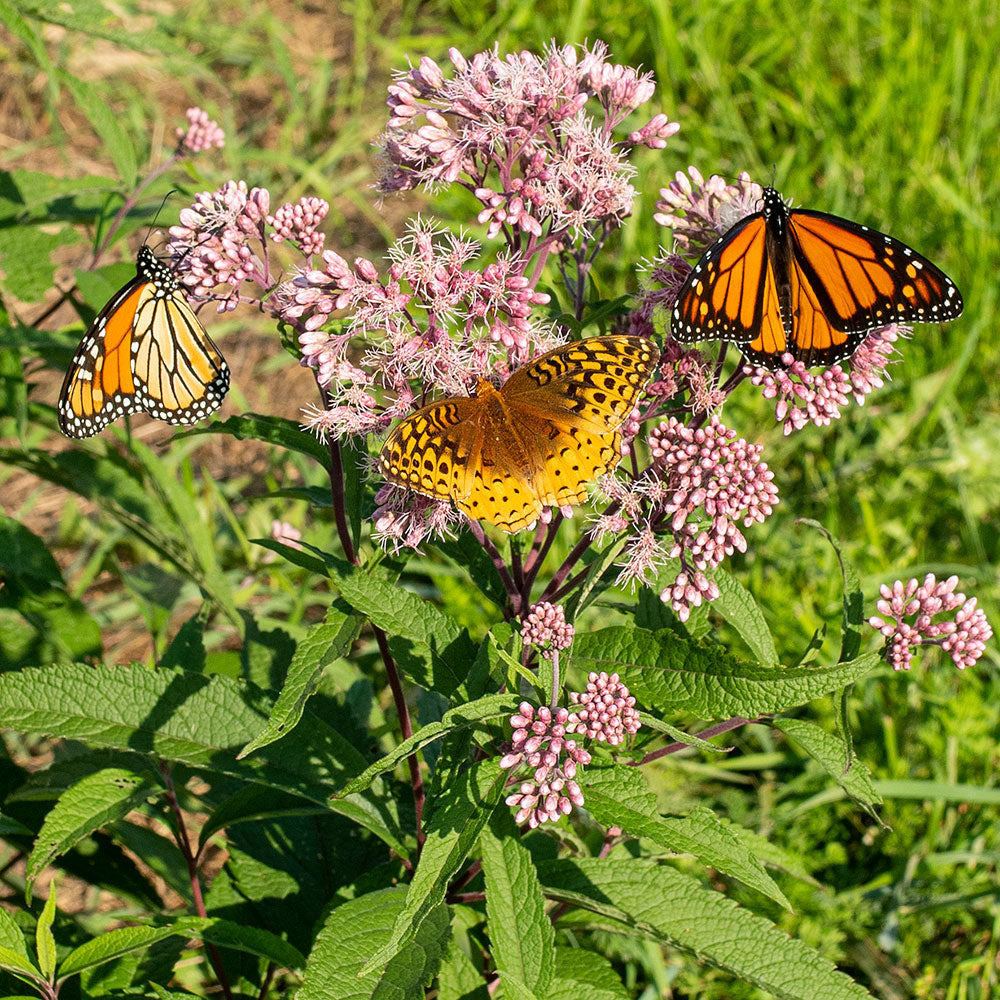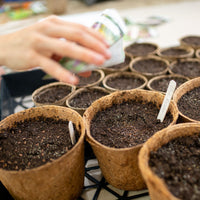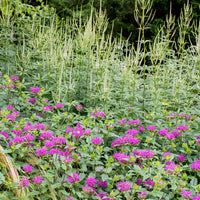Seed Packet
Joe Pye Weed
Eutrochium maculatum
Butterflies swarmed our new bed of this showy dusty rose native, the jostling Fritillaries, Monarchs, and Viceroys each claiming a flower and plundering the rich nectar within. An easy-to-grow flower that loves difficult spots that are wet, but grows happily in garden beds in humus-rich soil.
SKU #S1892






























